Undergraduate artists display work at Yale School of Art exhibit
At a special exhibition curated by a current undergraduate art student, Yale College art majors contributed pieces that ranged from digital videos to pottery, paintings and a reconstructed bedroom.
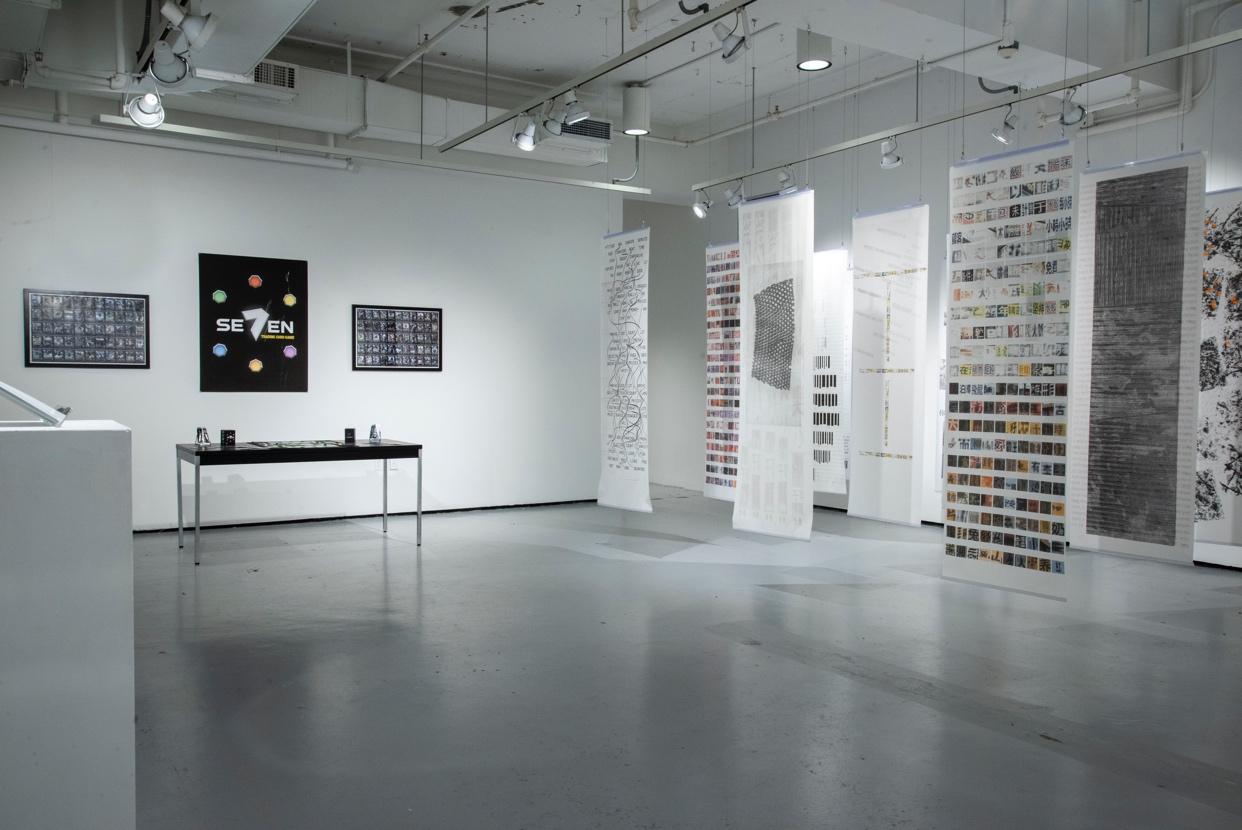
Courtesy of Adrian Martinez
Inside the Green Hall Gallery at the Yale School of Art, “SCREENED” brought together the works of almost 30 undergraduate art majors in a two-month exhibition that closed last Tuesday.
Apart from their work in the Yale College, these students also share rooms, corridors, elevators, professors, conversations and friendships with students at the Yale School of Art, one of the highest-ranked art graduate programs in the country. Doruk Eliacik ‘23 volunteered to curate the exhibit, making this the first undergraduate show at Yale curated by an undergraduate art student. Rudd Fawcett ‘23 stepped forward as the designer of the identity of the exhibit, a role typically taken on by MFA students that involves making all the signage and catalogs.
Previously, this fall exhibition was named “The Yale Undergraduate Midway Show.” However, Director of Undergraduate Studies Lisa Kereszi said that students this year “felt like they didn’t want to have lower expectations of a work in progress show.”
“They really upped the ante and pushed one another to put final pieces in the show as much as possible,” Kereszi said.
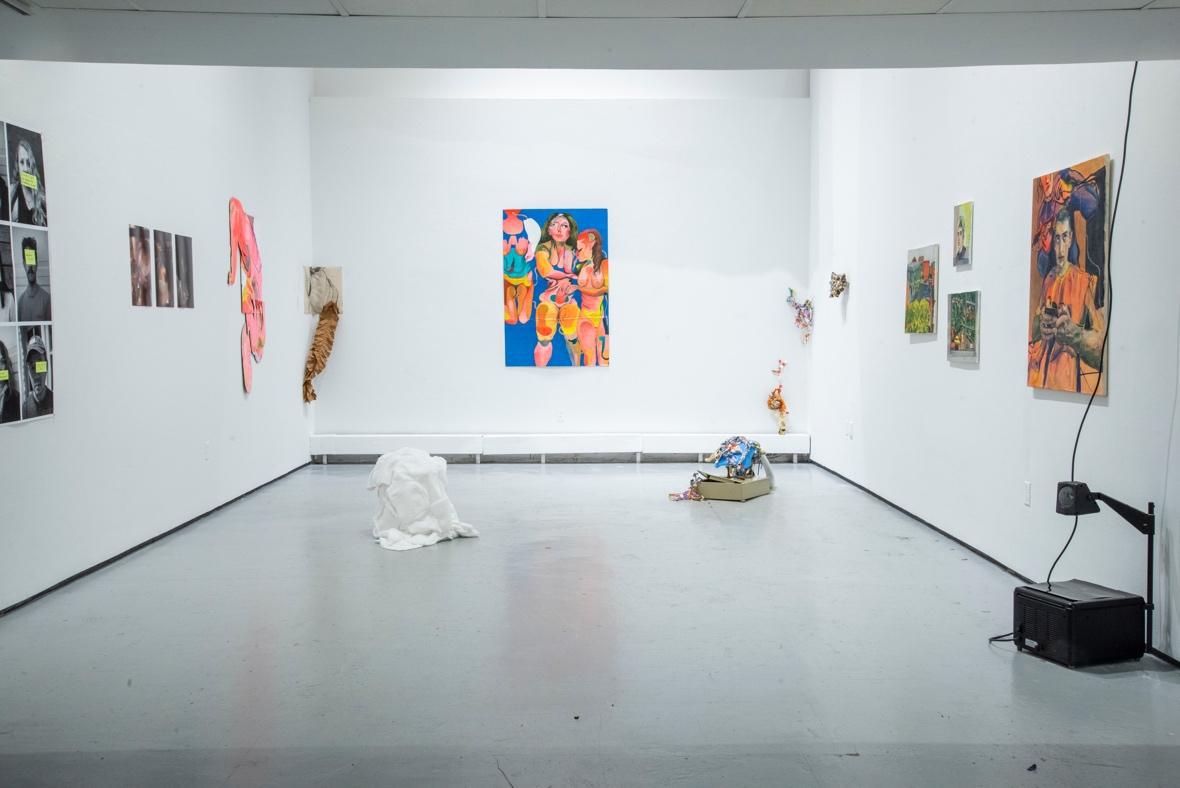
The mediums of the works range from ceramics and pastel on paper to digital video, acrylic, electronics and mixed media installations. The subject matter depends on each of the students’ interests. Unlike in some exhibitions, the works were not selected based on a common recognizable attribute or theme.
The title “SCREENED,” which was chosen by Eliacik, stemmed from the logistical organization of the works. Artworks displayed on electronic screens were sectioned off from those pieces that Eliacik said were “materially more complicated and communicated much more slowly.”
As guests walked through Green Hall and entered the first room to their right, the works of the seniors presenting their theses welcomed them to the show.
In the second room of the top floor, Eliacik pointed out that “bodies are absent…what had a more gentle touch floated to the top.”
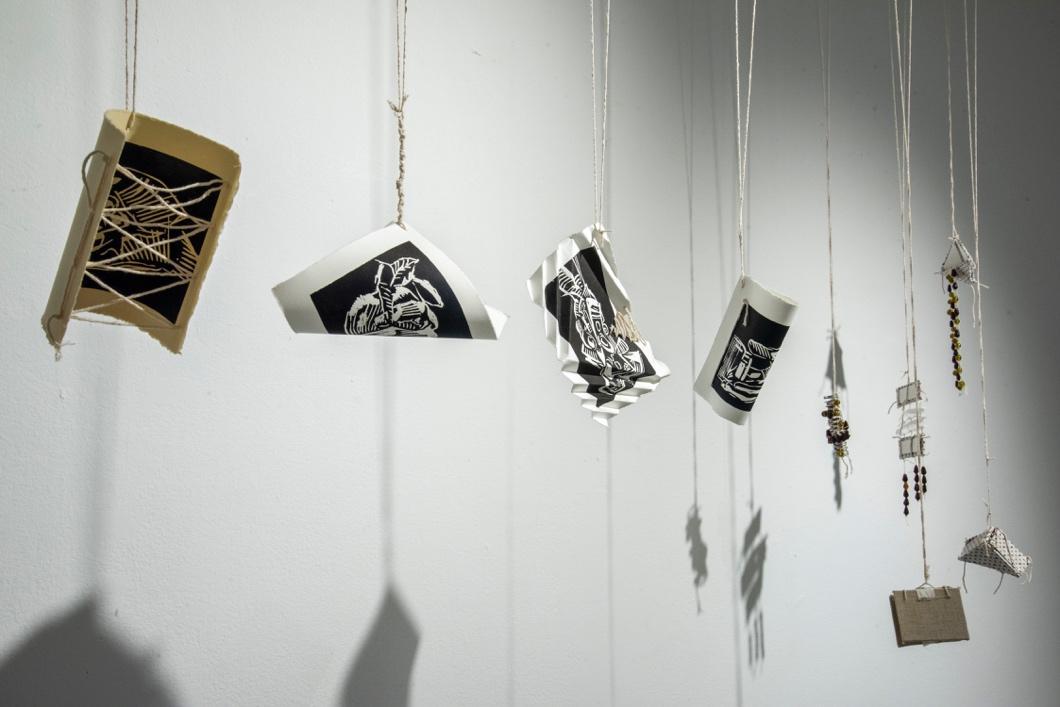
The mezzanine, the space between the top floor and the lower gallery, served, according to the curator, as a “transition into the basement, where we don’t have screens yet in terms of digital screens but there is something present in all of these works about how information gets mediated.”
Finally, in the basement, the screens and electronic materials appear around a piece by Rosa Chang ‘23 that reconstructs a bedroom.
The idea of “screens” led Eliacik to think about how artists in his cohort represented “a transitional generation between people who were born and grew up in an analog world and those who grew up with iPads.”

The works of art were not specifically collected to fit this theme. All senior art students — except for computing and the arts majors — were required to be part of this show. Nevertheless, despite the differences between all the pieces, participating students agreed that these works had a lot in common in terms of the creative process used to develop them.
The students who made these works all participate in a senior seminar at 9:25 AM every Friday, where they present and discuss their art with their classmates, professors and critics. When creating in their studios, a semi-communal space, the collaborative conversations also continue, said Kereszi.
“We have true friendships that go beyond being art majors,” said Diego Miró-Rivera ‘23. “We want what is best for each other, in and outside the gallery.”

Starting in September, Eliacik visited the artists’ studios and encouraged collaborative thinking. Every step of the curation was then workshopped with the artists. Miró-Rivera said that Eliacik, his classmate and curator, “did a great job of balancing everyone’s emotions and their work but not making too many decisions too quickly.”
Miró-Rivera’s piece, Hay Poncho in Green Hall, took shape inside the gallery. At first, the hay creature stretched across the space, but as the other artists installed their work, Miró-Rivera curved his own around the other pieces in the room to create a sense of cohesion.
He said of the process, “these are things that you don’t really plan ahead.”
Eliacik and Miró-Rivera both attended the Yale Norfolk School of Art residency over the summer, and Eliacik helped transport some of the hay Miró-Rivera cut from his land art installation, “Between the Boulders,” back to New Haven. Earlier this semester, in their shared studio building, fellow art student Hannah Neves ‘23 cut Miró-Rivera’s hair so that he could weave it into his work “Hay Diego,” which is displayed in the basement of the gallery. Miró-Rivera’s favorite T-shirt is weaved into Neves’s piece, “waiting for the ferryman,” along with many of her close friends’ and art major colleagues’ clothing.
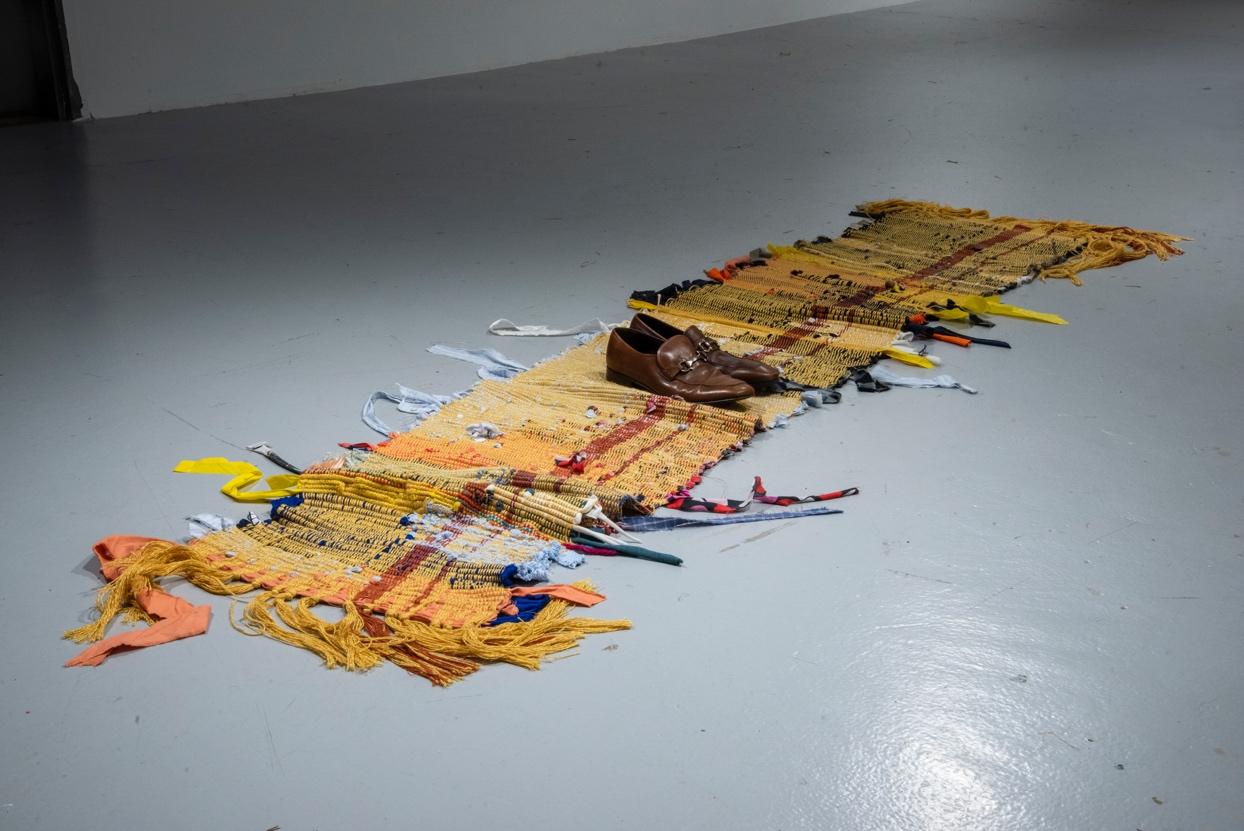
Chang’s bedroom installation also interacts with the surrounding artwork. As demonstrated during her performance at the opening reception, when the overhead gallery lights are dimmed and the lights inside the installation are on, visitors can look into her reconstructed bedroom while whoever is inside can only see their reflection.
“Everything gets blacked out except for the screens,” Chang said. “You just see these floating rectangles all around.”
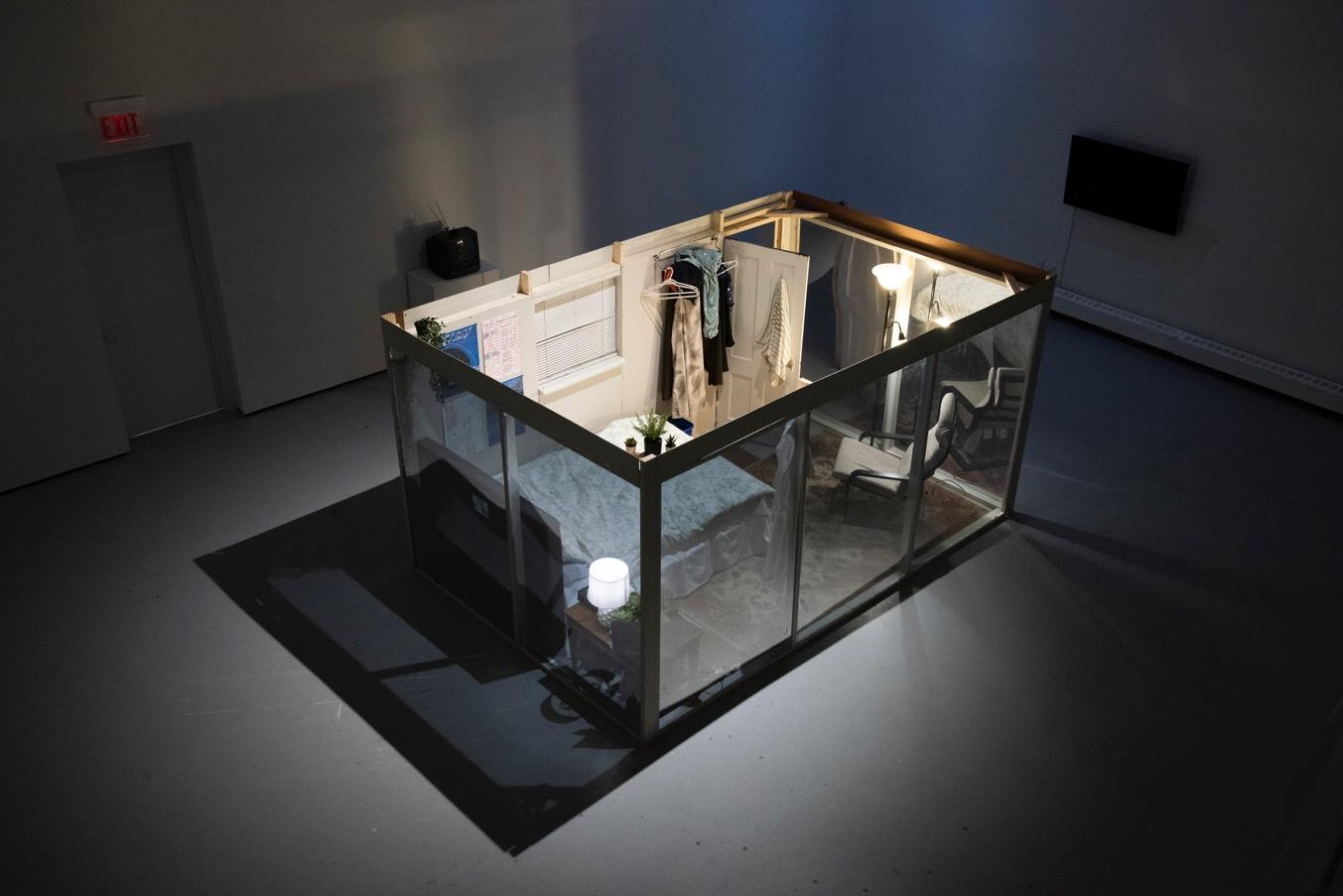
After past years of COVID-19 restrictions, this show also brought back together Yale students, faculty and community members who share a passion for art. Artists and visitors alike showed their excitement during the opening event on December 7.
“It is beautiful for the entire community to come out to see the works and to see so many people here for the opening,” said Benjamin Jenkins ‘24, who visited the exhibition.
The final thesis show for undergraduate art majors will take place from May 7 to May 23 in Green Hall Gallery and 32 Edgewood.







